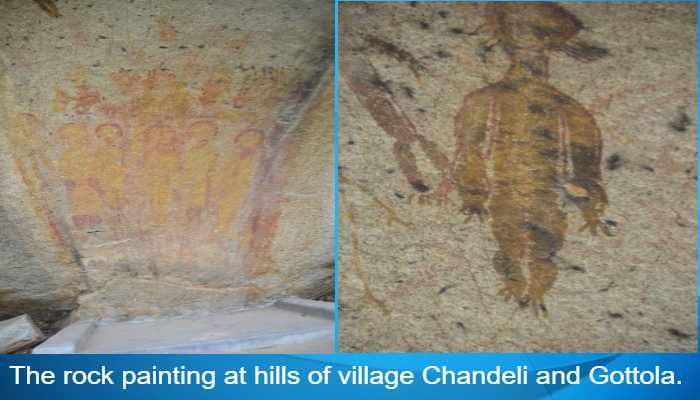
Bastar, a region rich in cultural heritage and ancient traditions, offers a fascinating glimpse into the past with its rock paintings and totem traditions. Stretching over 39,114 square kilometers, Bastar is located between 17.45 to 20 degrees north latitude and 80.13 to 82.15 degrees east longitude.
The evolutionary journey of humans in Bastar dates back approximately 300,000 years, when primitive humans migrated from regions as distant as the Mediterranean Sea and Siberia. Early settlers in Bastar lived in trees, riverbanks, and mountain caves, utilizing the region’s Archaean and Deccan Trap stones for hunting and gathering. They eventually transitioned from a nomadic lifestyle to agriculture, practicing “Penda” or “Jhum” farming, and began forming communal societies.
The Stone Age left an indelible mark on Bastar with the creation of tools, weapons, and farming implements. Notable sites such as Ghats Lohanga, Deurgaon, Binta, and others still contain remnants of these ancient tools and inscriptions.
One of the most significant archaeological sites is the “Jogi Darbar” in Udkuda, Kanker district. Here, a giant stone structure, believed to be a historical shelter for the Pandavas, is adorned with rock paintings dating back approximately 12,000 years. These paintings provide insight into the daily lives and cultural practices of early humans.
Further discoveries in Chandeli and Gotitola reveal additional rock paintings, illustrating group activities and the defensive use of stone weapons. These paintings, also around 12,000 years old, reflect the primitive man’s fears and survival strategies.
Evidence from Raurpara, Gandagauri, shows the evolution from cave-dwelling to settled village life. Large pits used for grain threshing and processing forest products are still visible, dating back 8,000 to 10,000 years. The development of burial practices also marks a significant cultural shift, with early humans transitioning from leaving bodies for wild animals to burying them with stones and soil around 3,000 years ago.
Around 1,300 BC, the practice of cremation was introduced and eventually became widespread among the primitive communities. The modern practice of totem installation, especially among the Madiya tribe in Tokapal and Bastanar development blocks, is a notable tradition. Totems, typically about six feet high, are created from layered rocks and engraved with images representing family deities, animals, and trees.
Today, Bastar’s tribal communities are integrating traditional practices with modern advancements. The use of tractors and modern farming techniques marks a significant shift from the region's ancient agricultural methods.
Bastar’s rich history, from ancient rock paintings and burial practices to modern totem traditions, provides a unique window into the cultural evolution of its people. These practices highlight the enduring legacy of the region's early inhabitants and their adaptation over millennia.
Contributors: Yogita Singh (Anthropologist, Writer, and Researcher), Firoz Khan (Paleo botanist, writer and researcher)
© Bharatiya Digital News. All Rights Reserved. Developed by TechnoDeva